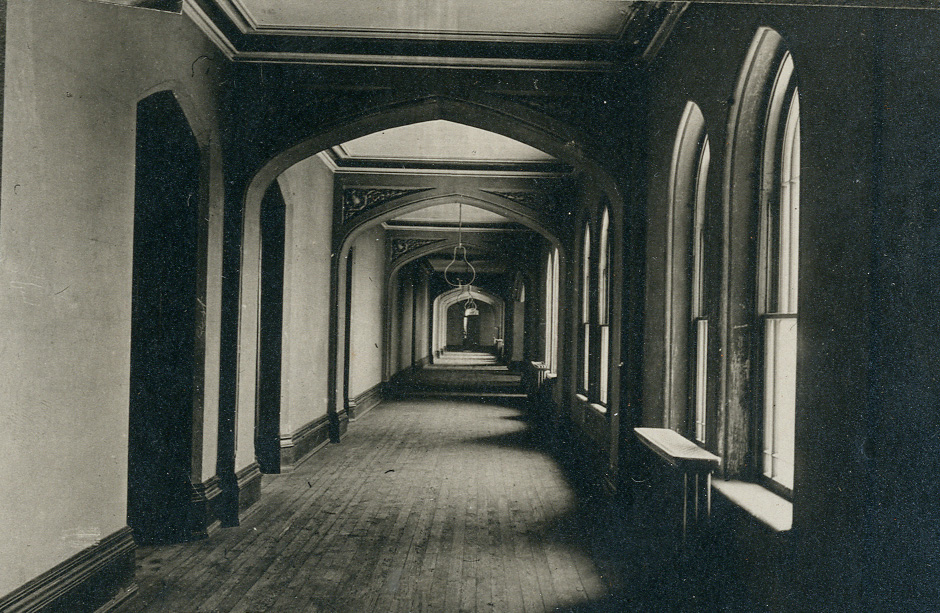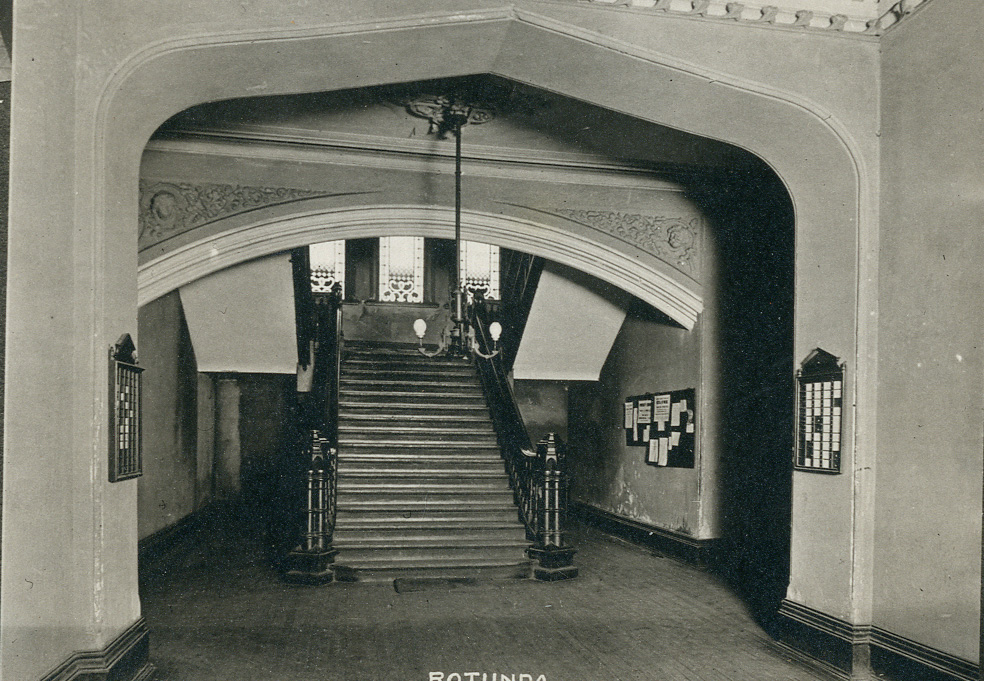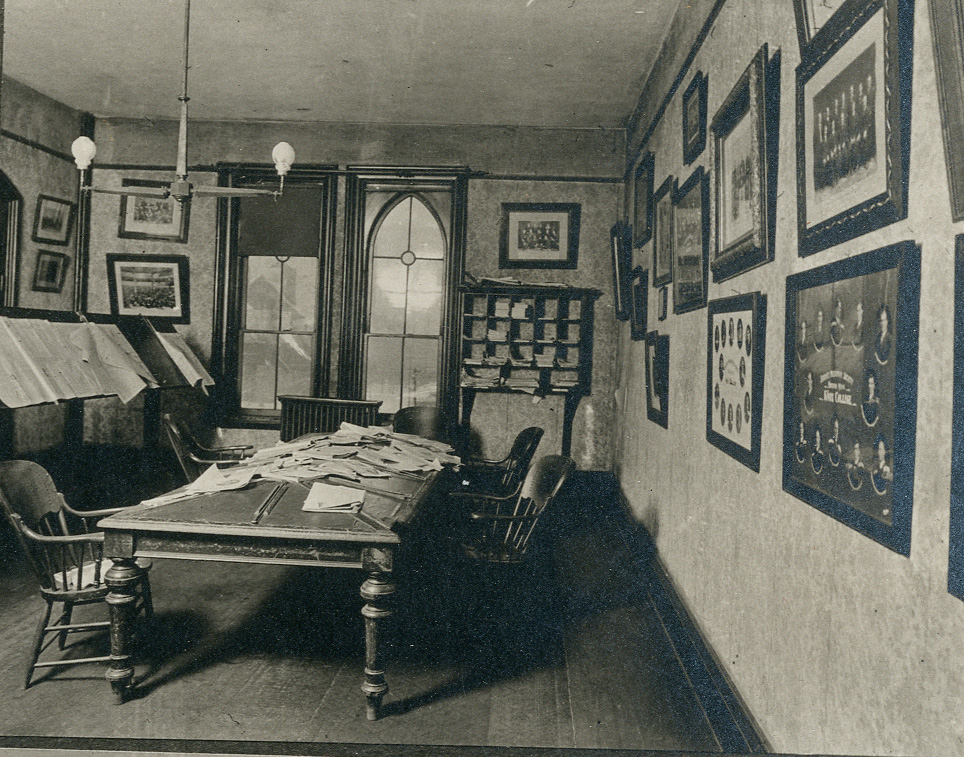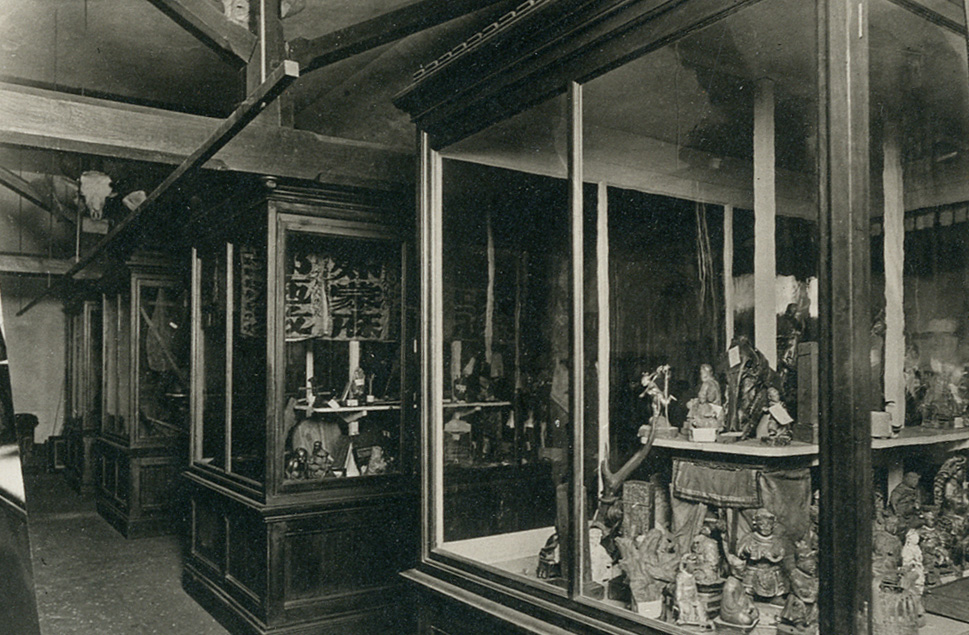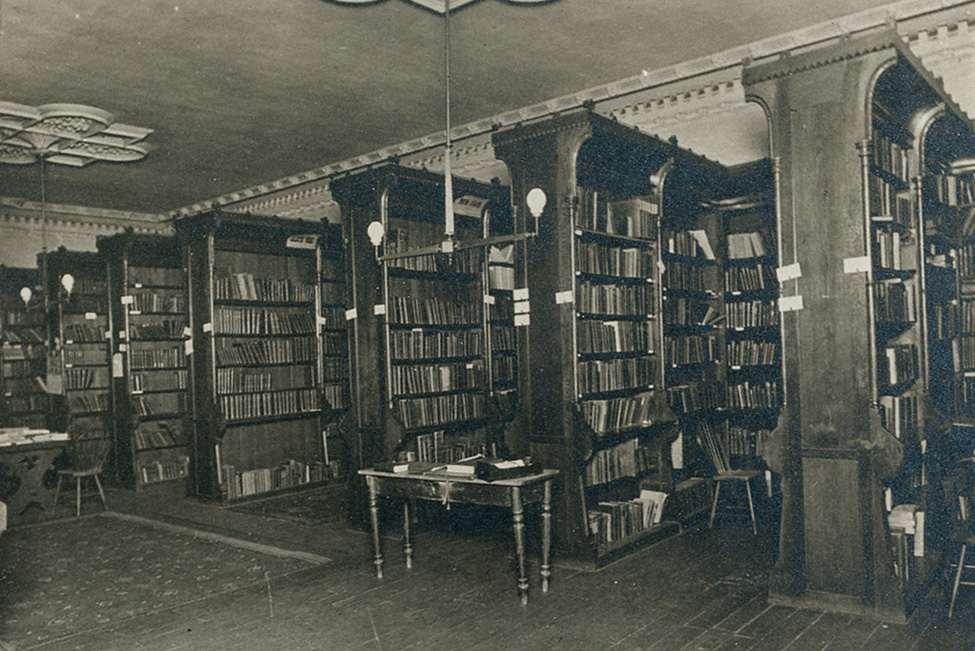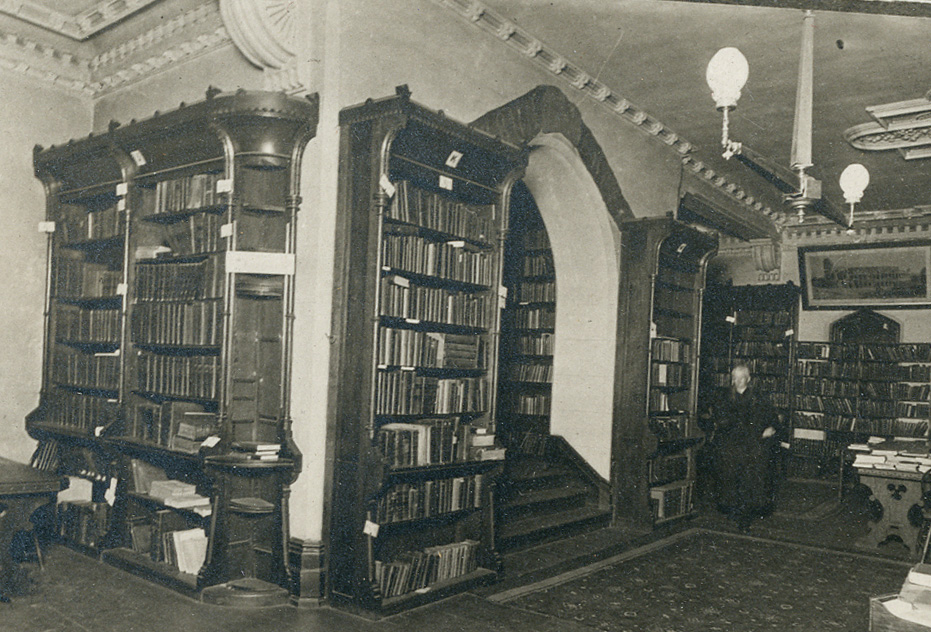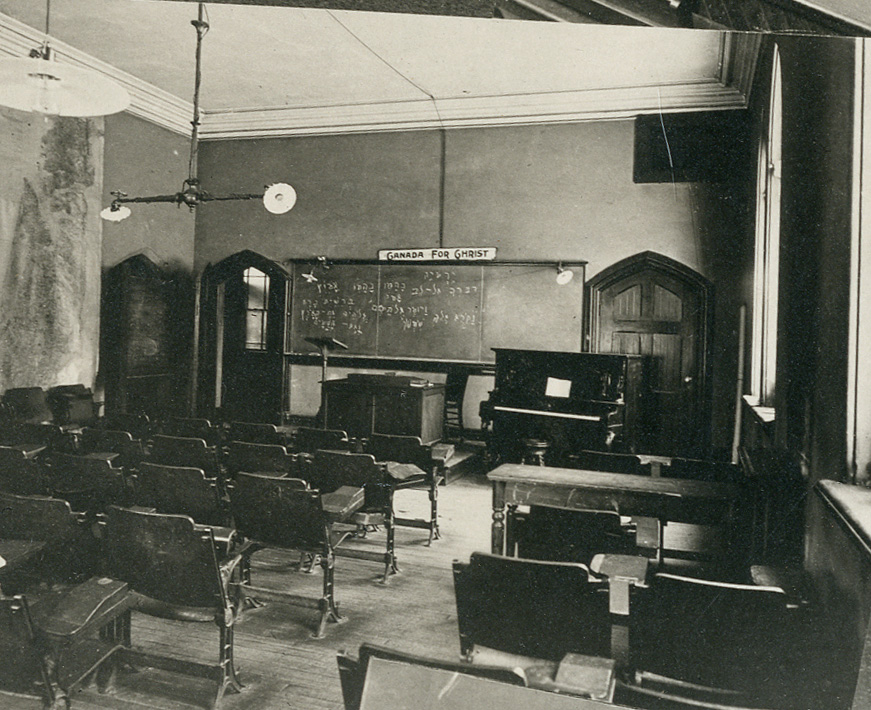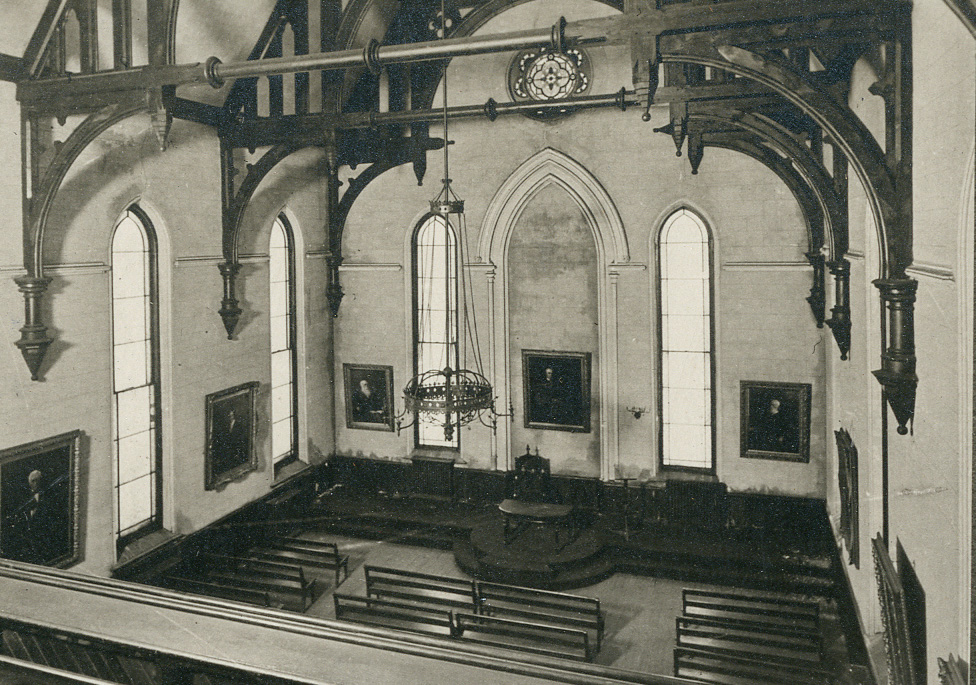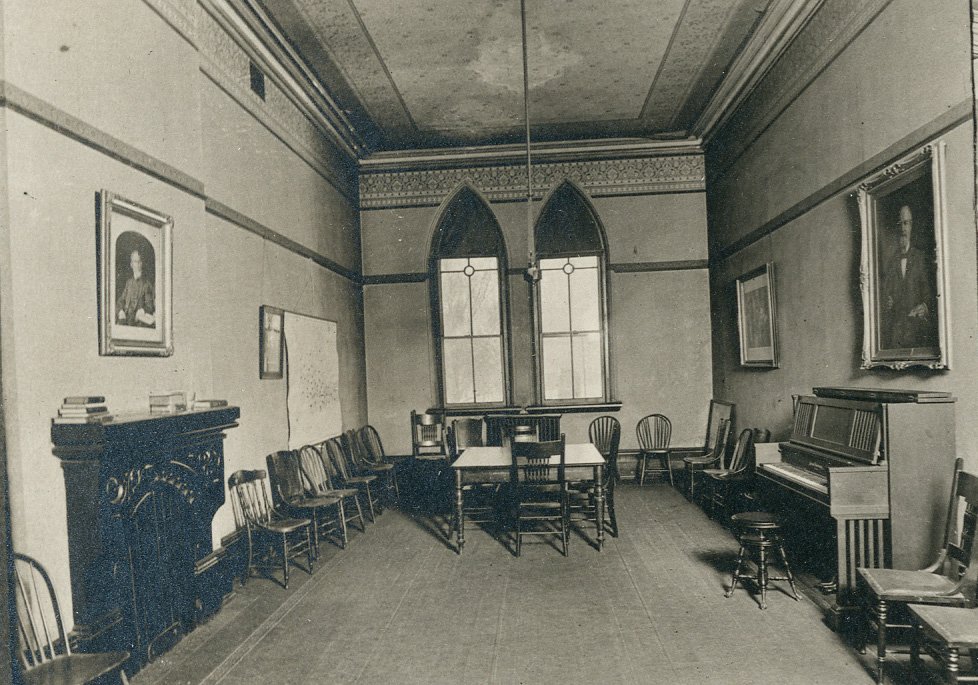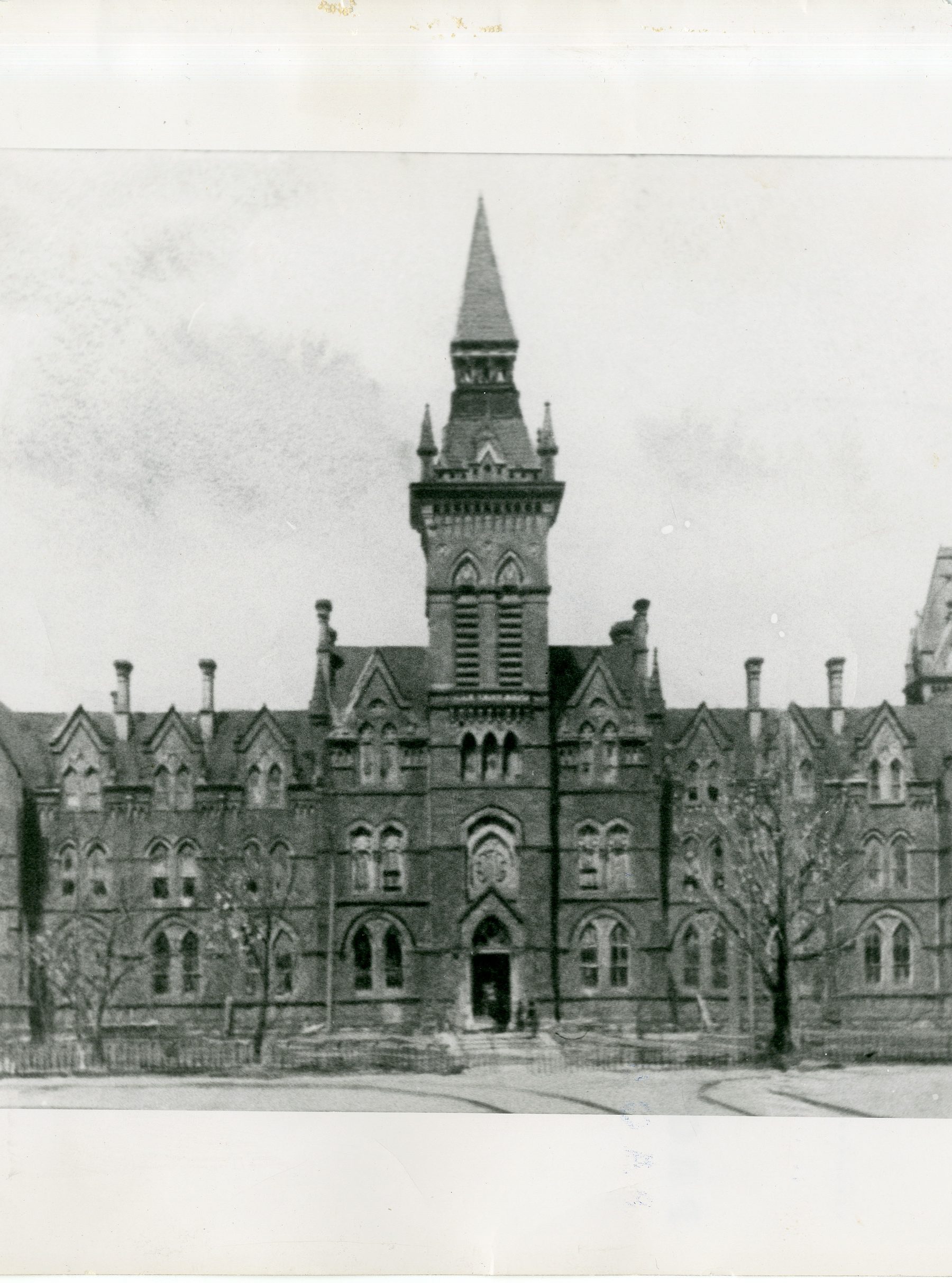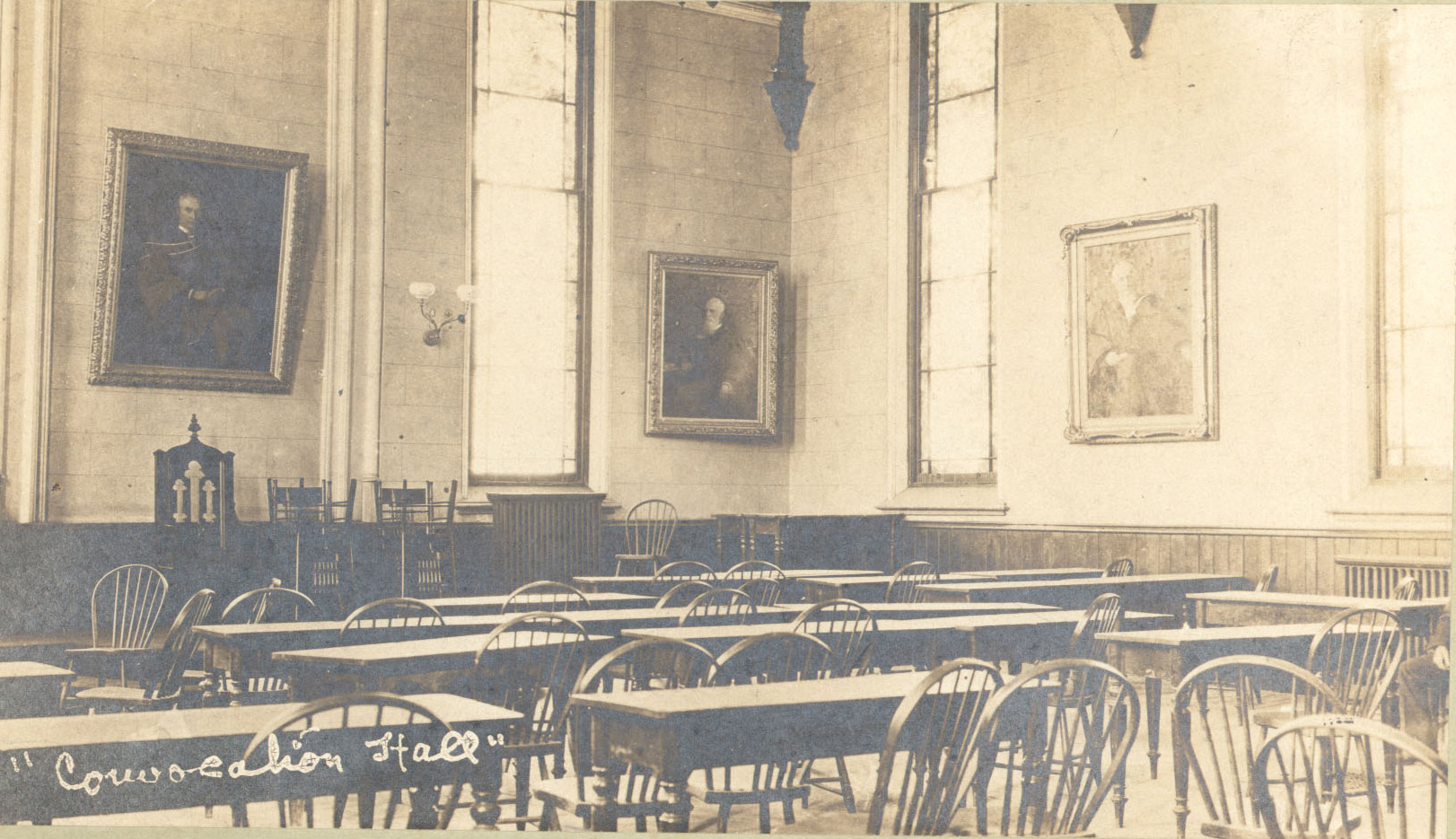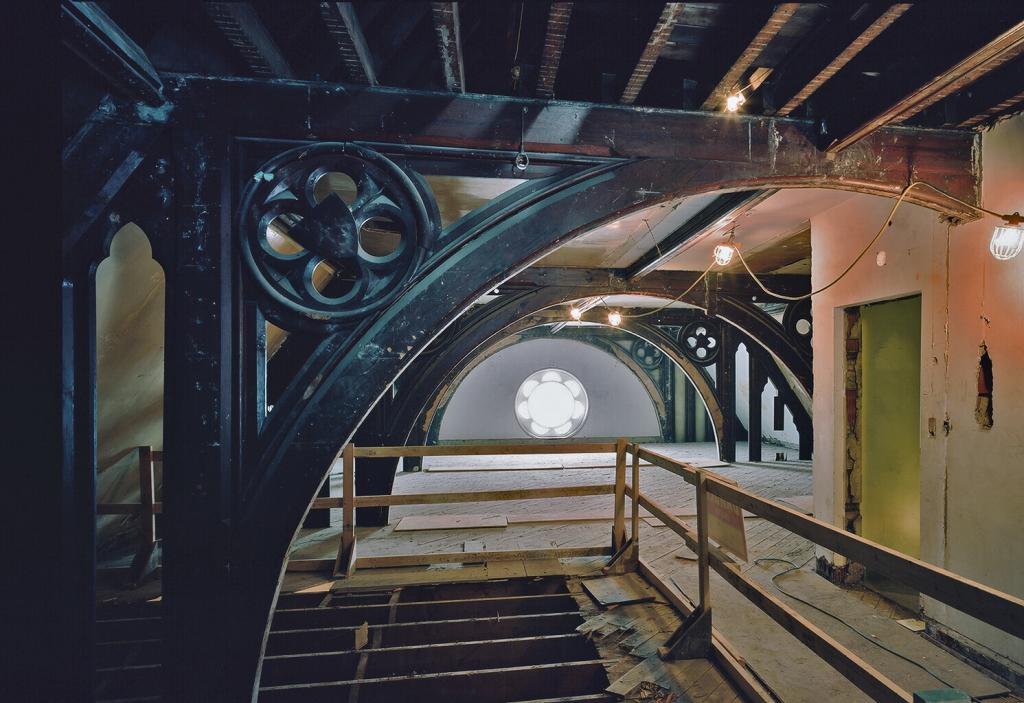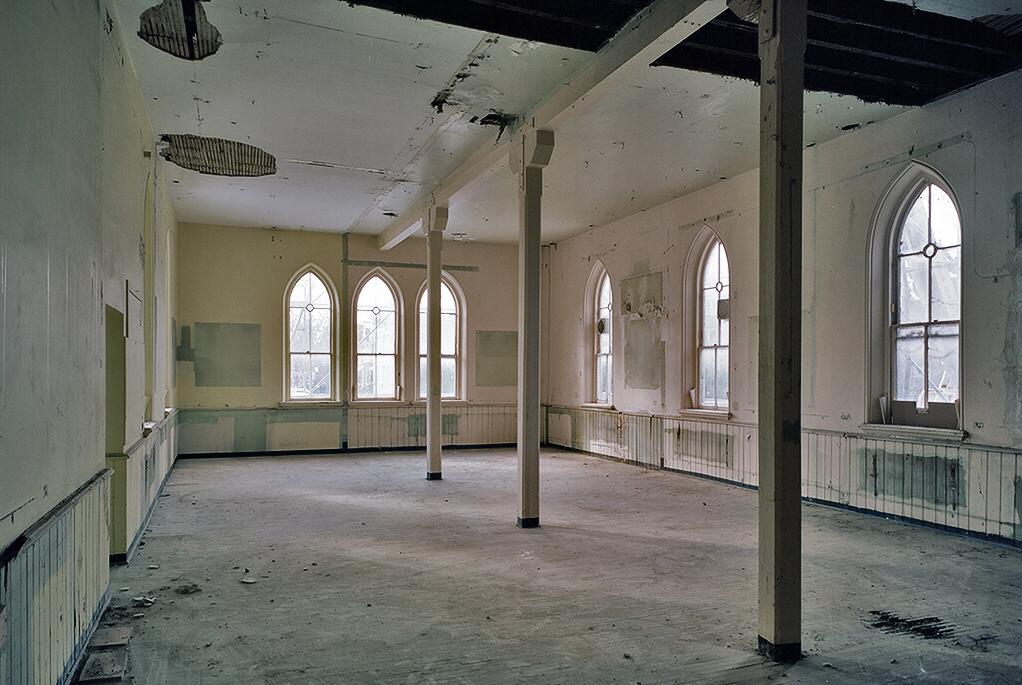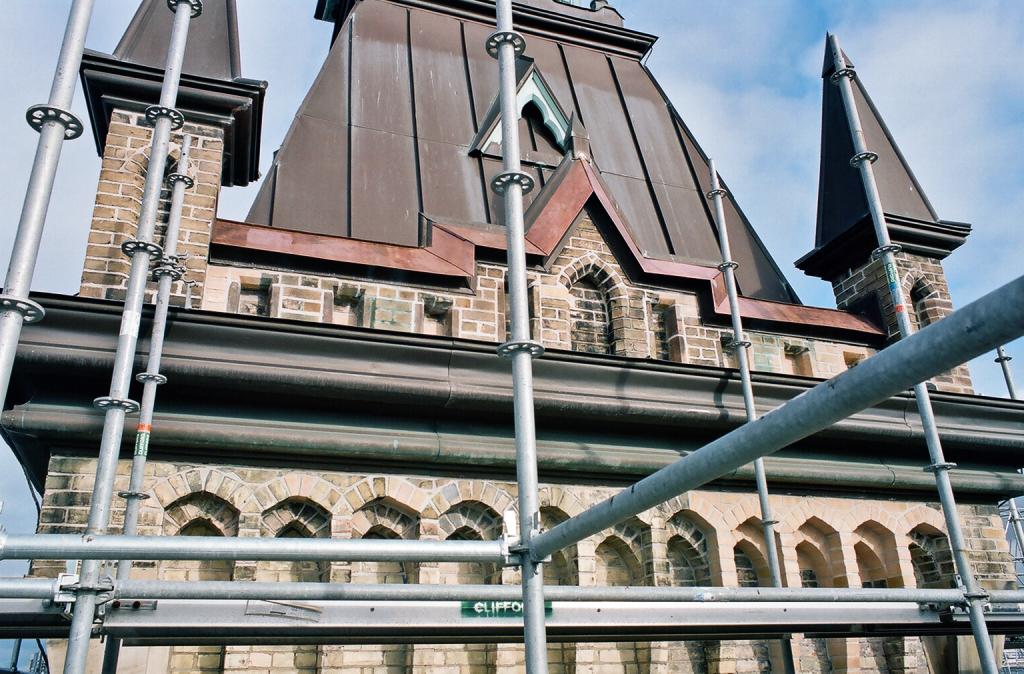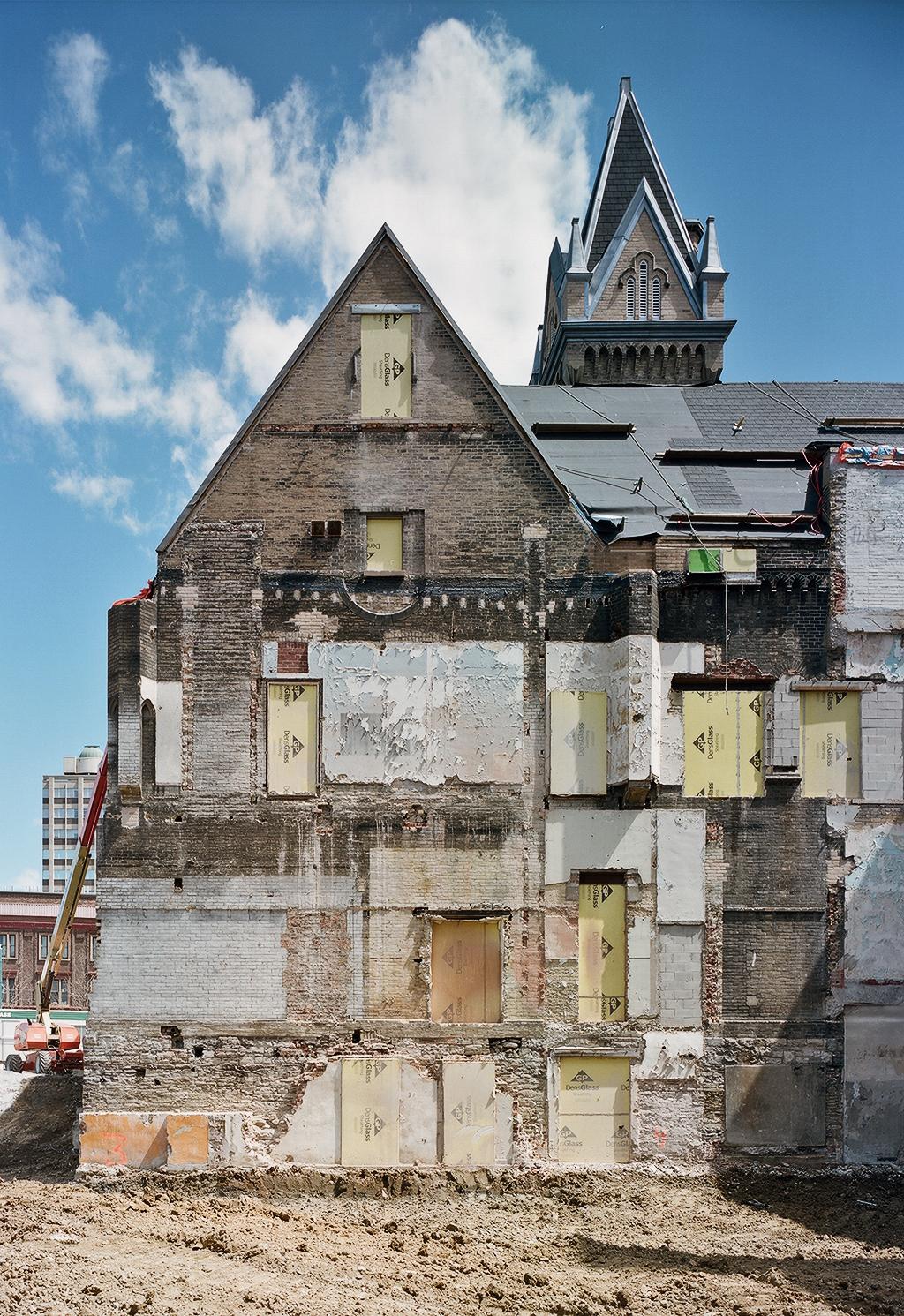1 Spadina Cresent
In 1873 it was decided that the College would move to its location at 1 Spadina Crescent. Principal William Caven and Professor William Gregg (Professor of Apologetics and Church History) managed to collect $40,000 out of the $130,000 it cost to build the building by June of that year. The new building was full from the time of opening, with 72 students being housed there. The year 1875 was also when the Canada Presbyterian Church, The Presbyterian Church of Canada in Connection with the Church of Scotland, The Synod of the Presbyterian Church of the Maritime Provinces of British North America, The Presbyterian Church of the Lower Provinces would all unite to create The Presbyterian Church in Canada. It was only fitting that the new church created a new college building in the same year.
Images from the past
During its time in this location Knox College’s relationship with the University of Toronto was beginning to change. In 1887 Knox College would join the federation which created The University of Toronto as we know it today. It was also granted a seat on the University’s Senate which can be seen as Knox’s commitment to having a well educated clergy in both theological studies and the liberal arts.
Uses after Knox and Restoration
The building eventually sold to the Government of Ontario for $225,000 in 1915 and would be used for many different purposes throughout its life time. During World War I the building served as a veteran’s hospital. In 1934 it became the Connaught Medical Research Laboratories which, between 1934 and 1966, was a site for medical research. The first Penicillin made in Canada was made at 1 Spadina, and the first Salk vaccine to cure Polio was also made here. From 1966 onward it has been used by the University of Toronto to house various different departments. The building is currently being renovated by the John H. Daniels Faculty of Architecture, Landscape and Design. It was named a heritage building on June 20 1973 by the City of Toronto Historical Board and received its plaque in 1995.
